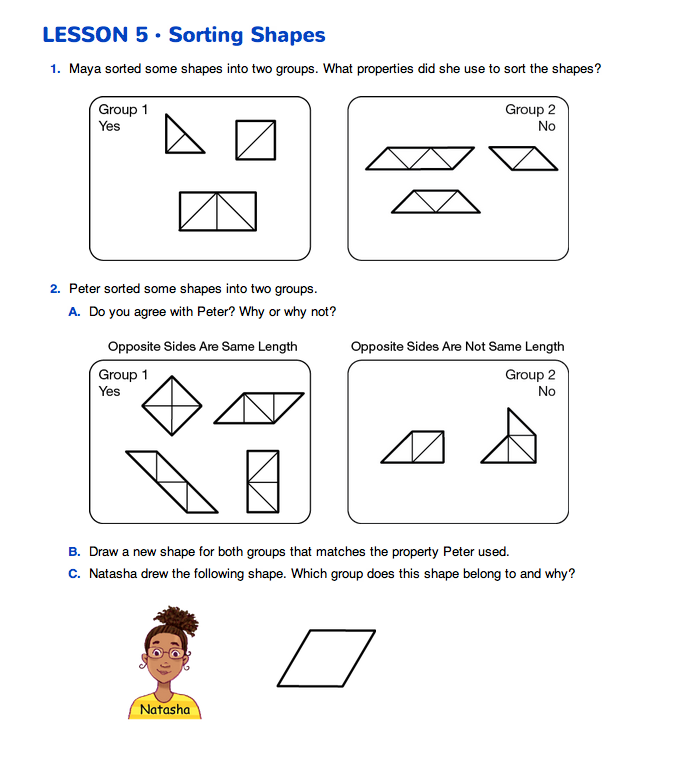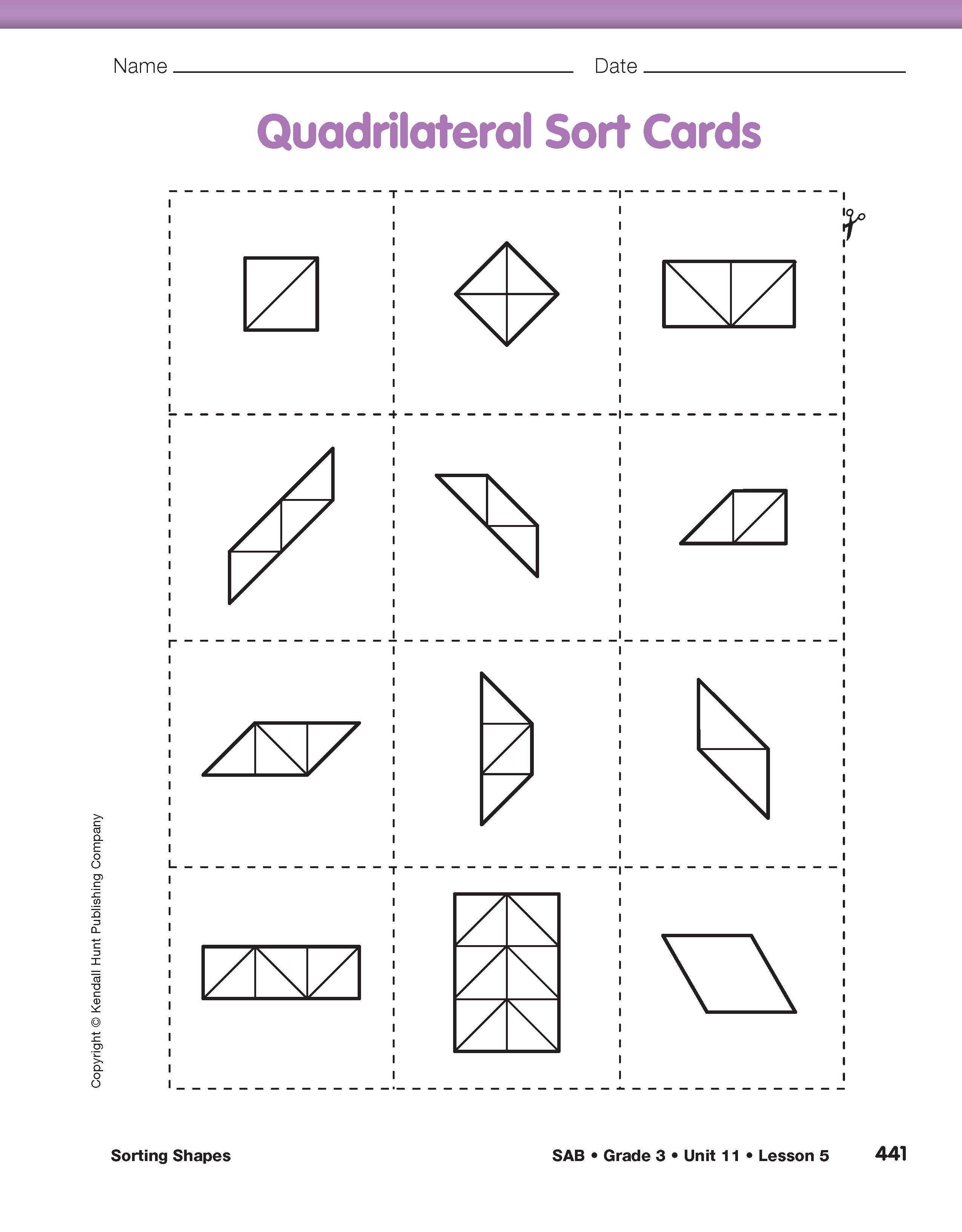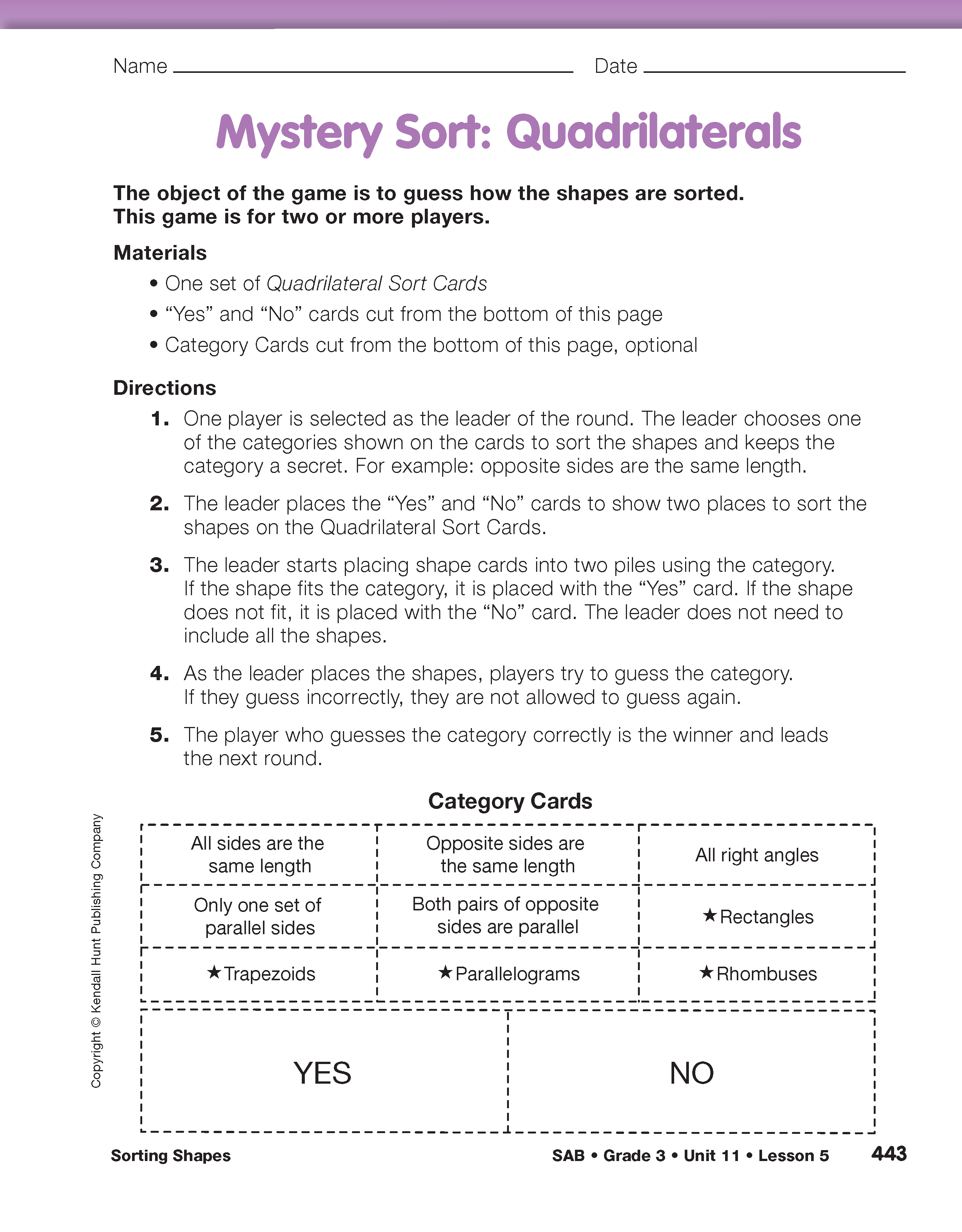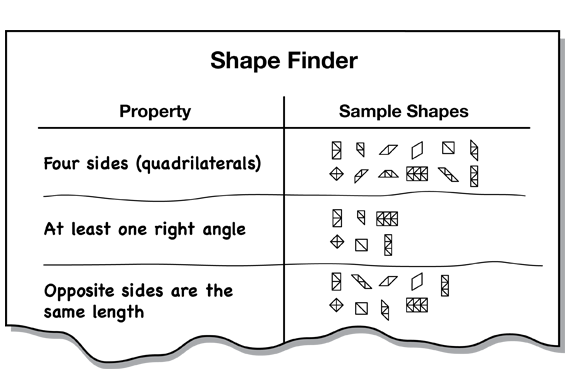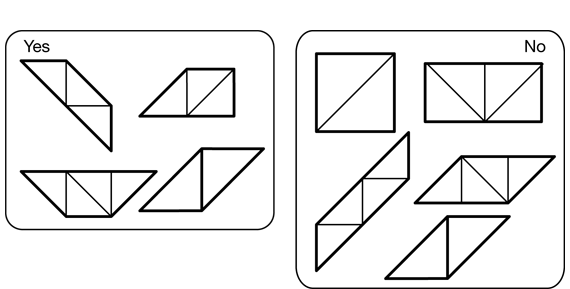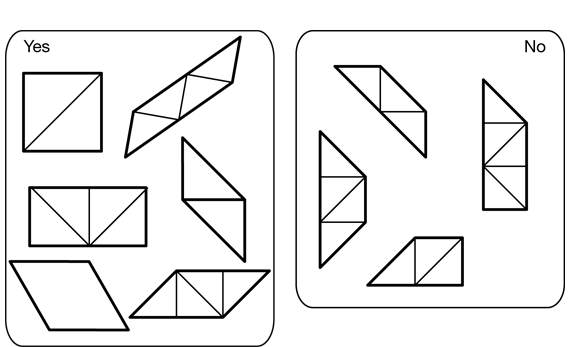Sorting Shapes
Est. Class Sessions: 2–3Developing the Lesson
Sort Shapes Built with Triangles. Using the shapes built from triangles in Lesson 4, students will sort shapes into categories based on properties of the shapes. Display the Shapes from Triangles chart you prepared. See Materials Preparation. Tell students that you have sorted all the shapes the students made in Lesson 4 into four groups.
Give students a few minutes to examine shapes in each group and ask:
Students will probably easily name the triangles in Group 1. Quadrilaterals have four sides; pentagons have five sides, and hexagons six. Label each group of shapes with the appropriate names. Distribute one self-adhesive note to each student. Ask them to choose one of the four groups and to draw a new shape that would go in that group. Then ask students to add their shapes to the display.
Display and discuss Questions 1–3 in the Student Guide to analyze the properties of groups of shapes. These questions show other ways to sort the shapes into two groups. In Question 1, the shapes in Group 1 have at least one right angle and the shapes in Group 2 do not have any right angles. In Question 2 students are asked to examine the shapes using a property: opposite sides the same length. They are also asked to add a shape and to think critically about another shape added to the group. Display the groups in Question 2 and ask several students to share the shapes they added to each group (Question 2B).
Discuss Question 2C further by asking:
Attempt to build a rhombus using the small right triangles from a set of tangram pieces and discuss the differences in side length.
Display the groups in Question 3 to discuss how students are analyzing the shapes. Use Question 3C to introduce the concept of parallel sides. Parallel sides are the same distance apart.
Ask:
Play Shape Finder. Ask students to refer to the shapes on the cards they prepared from the Quadrilateral Sort Cards in the Student Activity Book. Note that the shapes are quadrilaterals made from the small right triangles except for the last shape in the last row. This shape is the rhombus that Natasha added to the sort in Question 2 in the Student Guide. Display the Shape Finder chart you prepared and tell students the rules of the game.
Ask:
Have students find at least one shape that has each property and prepare to explain their choices. The table in Figure 2 provides a list of properties, examples of shapes, and lists one possible explanation for identifying each property. Others are possible. It is not necessary for the class to find every shape that has a given property.
As the class discusses each property, build a Shape Finder Chart of the properties with examples of the shapes from several copies of the Quadrilateral Sort Cards Master you prepared. This will compile a record of the properties and corresponding shapes that students can use during the remainder of the lesson. See Figure 3 for the beginning of a sample chart.
After playing Shape Finder, ask students to discuss the shapes and their properties.
Ask:
Play Mystery Sort with Quadrilaterals. Display a two-column table. Label one column “Yes” and the other “No.” Use the display set of the Quadrilateral Sort Cards Master you prepared to demonstrate how to play Mystery Sort.
Ask:
Use the list of properties on the Shape Finder chart to sort the shapes. This sorting activity will be used to classify quadrilaterals: rectangles, squares, rhombuses, parallelograms, and trapezoids. Following are some sample sorts and the related discussions:
Play Mystery Sort by placing all shapes with only one set of parallel sides in the “Yes” column and all other shapes in the “No” column. See Figure 4.
Ask:
Play Mystery Sort by placing all 12 sort cards in the “Yes” column.
Ask:
Play Mystery Sort by placing the shapes with two sets of parallel sides in the “Yes” column and shapes that do not in the “No” column. See Figure 5.
Ask:
Ask students to play Mystery Sort with a partner using the directions on the Mystery Sort: Quadrilaterals page in the Student Activity Book. For now ask students to use only the category cards with shape properties. These category cards do not have stars. Students will play with these other categories during Summarizing the Lesson.














